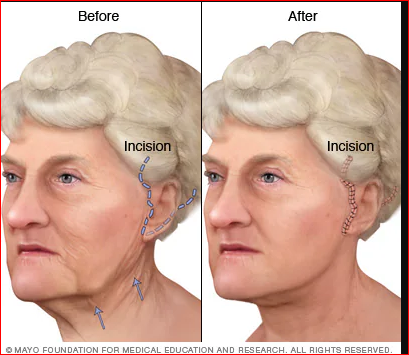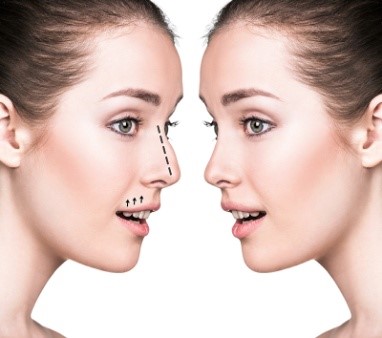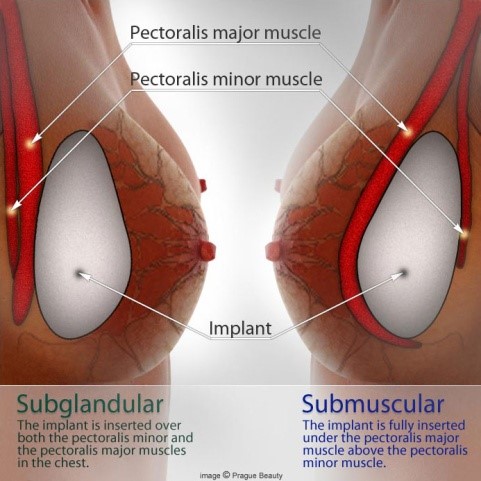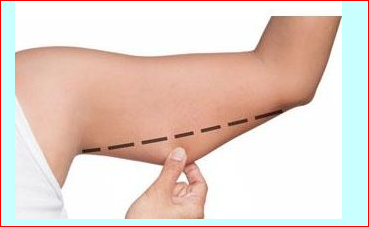Plastic and Aesthetic surgery


Plastic surgery
Forehead and Brow Lift
It is surgical procedure carried out to correct The effects of aging on forehead such as frown lines, wrinkling across the forehead, and an increasing heaviness of the eyebrows.
Why forehead & browlift is required?
With aging The skin begins to lose its elasticity. resulting in frown lines, wrinkling across the forehead, and sagging eye brows,. people . may mistake your appearance as tired, angry, or sad when this is not how you actually feel.
How it is done?
It is commonly performed under local anaesthesia in combination with iv sedation by placing a single or multiple small incions behind the hairline.
What is the recovery time?
Bruising and swelling is expected to last for a couple of weeks,Sutures are removed in 7 to 10 days,numbness and itching associated with procedure will subside with time.
Plastic surgery
Face lift
A face-lift is a cosmetic surgical procedure to create a younger look in the face. The procedure can reduce sagging skin. It can also help smooth folds of skin on the cheeks and jawline. A face-lift is also called a rhytidectomy.

During a face-lift, a flap of skin on each side of the face is pulled back. Tissues below the skin are altered, and excess skin is removed. This gives the face a more youthful shape.
A neck lift is often done as part of a face-lift. It reduces fat and sagging skin on the neck.
A face-lift won’t correct damage from sun exposure, such as fine lines and wrinkles. Other cosmetic procedures can address the look or quality of the skin itself.

Plastic surgery
Blepharoplasty
It is a procedure done to correct droopy upper eyelids and remove puffiness &bags over lower eye lids.it is not done to correct wrinkles and dark circles around the eyes.it is done as a day care procedure.
What are the expected results?
A more refreshed look is often the result when eye bags are improved with blepharoplasty.
Are the scars visible?
In a blepharoplasty, the eyelids heal remarkably quickly and scars are usually quite inconspicuous.
What is the recovery time?
Eyelids heal very quickly & usually you will be advised to aovoid certain activities and environments for a couple of weeks.certain amount bruising and sweeling of eyelids is normal occurrence following surgery.
What are the risks of blepharoplasty?
The risks of blepharoplasty are fairly minimal but include poor healing, persistent fat or loose skin and muscle, dry eyes, and very rarely, visual changes or loss.
Plastic surgery
Rhinoplasty
Rhinoplasty commonly known as a nose job, is a plastic surgery procedure for correcting and reconstructing the form, restoring the functions, and aesthetically enhancing the nose.
Procedure involves enhancing nose either by open or closed technique.cartilage or bone graft is used to enhance nasal depression, & nasal tip.bone or cartilage removed to reduce the hump.
Procedure can be done under sedation/local anesthesia/general anesthesia depending on the extent of correction needed.


Plastic surgery
Otoplasty/prominent ear correction
Otoplasty — also known as cosmetic ear surgery — is a procedure to change the shape, position or size of the ears.
You might choose to have otoplasty if you’re bothered by how far your ears stick out from your head. You might also consider otoplasty if your ear or ears are misshapen due to an injury or birth defect.
Otoplasty can be done at any age after the ears have reached their full size — usually after age 5 — through adulthood.
If a child is born with prominent ears and certain other ear-shape problems, splinting may successfully correct these issues if started immediately after birth
Plastic surgery
Buccal fat removal
Buccal fat is fat between your cheekbones and jaw bones in your face. These fat pads help make up the shape of your face. Buccal fat removal is a surgery to remove the fat in this area of your face. This can highlight the bone structure in your face, especially your cheekbones and the hollowed-out areas between your cheeks and jawline. The procedure is also sometimes called a cheek reduction


Plastic surgery
Lip augmentation
Lip augmentation is achieved with lip injections to even out or plump the lips. The most common dermal filler used to be collagen, but it has been replaced with products that are considered to be safer and longer lasting. Hyaluronic acid and polyacrylamide are currently the most popular dermal fillers used.
Fat injections are also available, but involve liposuction surgery to remove fat from another area of your body.
Sometimes fillers can cause an allergic reaction on your face or lips. Be sure to complete a professional consultation to understand the different filler options available and to get a qualified recommendation on the best option for you.
The benefits of lip augmentation include:
• quick outpatient treatment
• treatments can be paced until the desired lip volume has been reached
• lip volume can be controlled by the amount of substance injected
The negatives of lip augmentation include:
• only lasts about 6 months
• cold sores or fever blisters could be reactivated
• possible swelling and bruising
Upper Lip Lift.
What is upper lip lift?
It is a procedure done to correct long upper lips which prohibits good incisor teeth show.
How it is done?
A small amount of skin is excised in a systematic fasion under the nasal base to elevate the upper lip.
Are the scars visible?
NO, scar will be placed under the nasal base & inside the
nose to avoid visibility of scars.
dimple creation.
What is a dimpleplasty?
A dimpleplasty is a type of plastic surgery used to create dimples on the cheeks. Dimples are the indentations that occur when some people smile. They’re most often located on the bottoms of the cheeks. Some people may also have chin dimples.

Not everyone is born with this facial trait. In some people, dimples are naturally occurring from indentations in the dermis caused by the deeper facial muscles. Others may be caused by injury.
Regardless of their causes, dimples are regarded by some cultures as a sign of beauty, good luck, and even fortune. Due to such perceived benefits, the number of dimple surgeries has increased significantly in recent years.

Plastic surgery
Facial implants.
Facial implants are specially formed solid materials compatible with human tissues, designed to enhance or augment the physical structure of your face.
The precise type and size of facial implants best suited for you requires an evaluation of your goals, the features you wish to correct and your surgeon’s judgment.
While any area of your face can be augmented with implants, the cheeks, chin and jaw are the most common sites for facial implants. If you are bothered by a small chin, weak jaw or lack of facial contour, plastic surgery with facial implants may benefit you.
Chin implants
Chin implants can increase the size and projection of a chin that is not in proportion with the forehead and mid-face. A small or recessed chin can also be described as one that seems to disappear into the neck of an individual of normal weight, rather than appearing as a distinct facial feature.
Jaw implants
Jaw implants increase the width of the lower third of your face. Much like the chin, a weak jaw can be thought of as one that is not well defined and distinct from the neck or one that slopes rather than angles from the ear to the chin. In some cases, both the chin and jaw can contribute to facial imbalance.
Cheek implants
Cheek implants increase the projection of the cheekbones. They add volume to areas that may be recessed or flat.
Chin surgery; augmentation/reduction.
What is chin surgery?
Chin surgery, also known as genioplasty or mentoplasty, is a surgical procedure to reshape the chin either by enhancement with an implant (genioplasty) or reduction surgery on the bone (mentoplasty).

Plastic surgery, and other minor office procedures, can often be performed on the lower jaw line and chin area to improve proportions of the face and to help with one’s confidence and self-esteem. These types of interventions are frequently suggested by board-certified plastic surgeons to improve the harmony of facial features and improve the chin/jaw/cheek/forehead balance.
Sometimes bone from the jaw itself can be moved forward in an operation called a mentoplasty or genioplasty. Alternatively, shaped silicone implants can be used to give more projection to the chin. Conversely, bone can be removed to decrease an overly projecting chin. Furthermore, modifications to the upper and/or lower jaw can be advised for improved chewing dynamics and occlusion – or how the teeth fit together. These operations can range from simple to very complex.
Many times a plastic surgeon may recommend chin surgery or procedures to a patient having a rhinoplasty in order to achieve better facial proportions, as the size of the chin may magnify or minimize the perceived size of the nose.
Additionally, with recent advances in technology, and after obtaining informed consent after reviewing all options, risks and benefits, your plastic surgeon may suggest off-label use of FDA-approved gel filler material as an alternative for providing augmentation of the chin area that may last for a shorter duration.
Types of chin surgeries
Surgery can be performed on the chin to alter or improve its appearance. The two main types of chin surgery are either chin augmentation or chin reduction.
Chin augmentation/implants
Chin augmentation surgery is usually performed to augment an underprojected chin. Typically, this is accomplished by placement of an implant directly on the bone. A small incision is made either inside the mouth or underneath the skin of the chin. After the implant is placed, the incision is then closed with sutures. Mild swelling may occur for a few days, and patients usually are able to return to work within a week.
Chin reduction surgery
Chin reduction surgery, or chin shaving surgery, is performed to reduce a prominent or overprojected chin. The surgery is typically performed under general anesthesia as an outpatient procedure. A small incision is made either inside the mouth or underneath the skin of the chin. Excess bone is removed, and the chin is contoured to the desired shape. The incision is closed with sutures.

Plastic surgery
Double chin correction
A double chin, also known as submental fat, is a common occurrence that happens when a layer of fat forms below your chin. It’s often associated with weight gain but can be caused by genetics or looser skin resulting from aging.
Available treatments include;
Liposuction.
Injection lipolysis.
Laser lipolysis.
Plastic surgery
Fat grafting
Fat grafting is a technique in which harvested adipose tissue is injected underneath the skin for the reconstruction of traumatic, oncologic, or congenital defects. The technique may also be used for cosmetic purposes, particularly facial rejuvenation. The term “autologous fat grafting” refers to the same procedure when the fat is harvested from the person who will also receive it, which is the most common clinical scenario. Autologous fat is considered by many to be the ideal filler material for facial rejuvenation, as it is 100% biocompatible, produces a soft and natural result, and is theoretically a permanent intervention

Body and breast

Body and breast
Breast augmentation/enhancement
Breast augmentation can enhance your appearance and your self-confidence, enlarging your breasts and making them more proportional with the rest of your body.saline or silicone implants are used to enlarge breasts. Implants are placed either behind the breast tissue or under the pectoralis muscle on the chest wall. Breast implants will make your breasts larger, but the underlying shape of your breasts will not change, and differences in the size and shape of your breasts may even be more obvious after the surgery. Breast enlargement can also be achieved by fat injection.
Breast augmentation surgery requires a general anaesthetic, with the operation taking 1-2 hours. Following the surgery it is important to have restricted light activities, with no lifting or heavy duties for 7-10 days. Heavy activities and sport should not be undertaken for 3-4 weeks following the surgery.
BODY AND BREAST
Breast lift / mastopexy
What is a breast lift?
A breast lift, also called mastopexy, is surgery to change the shape and appearance of your breasts. During mastopexy, a plastic surgeon can:

Lift your breast higher on your chest.
Make your breasts more symmetrical or identical to each other.
Reduce the size of your areola (darkened area around the nipple) and make it face forward rather than downward.
Remove extra skin that may have stretched over time.
Reshape your breast to a more rounded appearance.
Tighten your breast tissue to better support your nipples and areolas

Body and breast
Nipple areola creation.
To create the nipple, the plastic surgeon uses skin from the area on the breast where the new nipple will be located. This involves making small incisions, forming the tissue into a nipple shape, and securing it with stitches. The areola may be created later by tattooing.
BODY AND BREAST
Breast reduction
Women with very large breasts may experience a variety of medical problems caused by the excessive weight. The most common of these include back and neck pain, posture problems, skin irritation and rashes under the breasts. Bra straps may leave indentations in their shoulders. Occasionally, even skeletal deformities and breathing problems can occur.

Breast reduction removes fat, glandular tissue, and skin from the breasts, making smaller, lighter, and better-shaped breasts which are in proportion with the rest of the body.
There are many different techniques described for breast reduction, with nearly all techniques leaving the nipple-areola complex attached to the breast tissue.
Following the surgery it is important to have restricted light activities, with no lifting or heavy duties for 10-14 day . Heavy activities and sport should not be undertaken for one month following the surgery. The breasts tend to settle in the months after the surgery, with the final breast shape not being attained until 3-6 months after surgery.

Body and breast
Abdominoplasty ( Tummy Tuck)mommy makeover
Abdominoplasty or "tummy tuck" is a cosmetic surgery procedure used to make the abdomen thinner and more firm. The surgery involves the removal of excess skin and fat from the middle and lower abdomen in order to tighten the muscle and fascia of the abdominal wall. This type of surgery is usually sought by patients with loose or sagging tissues after pregnancy or major weight loss
An abdominoplasty can be combined with liposuction to make a Lipotuck, which performs body contouring around the hips, thighs, and buttocks. It can also be combined with liposuction contouring, breast reduction, breast lift, A popular name for breast enhancement procedures performed in conjunction with an abdominoplasty is a “mommy makeover”.
Recovery: Can take one to four weeks and patients are advised to take at least a portion of this recovery time off from work.Heavy lifting is best avoided during this time. Initially there may be bruising and discomfort.A supportive abdominal binder or compression garment can minimize swelling / bruising, and support the repaired tissues. This compression garment is also effective in helping the skin in the treated area conform to its new shape.Patients are advised to avoid all forms of nicotine for a month or longer prior to surgery and also during the recovery period.Full recovery takes 3–6 months, with further fading of scars thereafter. Scars may appear red and prominent at first, but with proper care, they heal into a thin, silvery line.
BODY AND BREAST
Liposuction
Liposuction, or simply lipo, is a type of cosmetic surgery that removes fat from the human body in an attempt to change its shape. . It involves using a cannula and negative pressure to suck out fat.People operated on should generally have a normal weight and good skin elasticity.

Areas operated on can include the abdomen, thighs, buttocks, and backs of the arms. The procedure may be performed under general, regional, or local anesthesia.
Liposuction is generally used in an attempt to change the body’s shape. Weight loss from liposuction appears to be of a short term nature with little long term effect. After a few months fat typically returns and redistributes.Liposuction does not help obesity related metabolic disorders like insulin resistance.
Recovery Depends on the extent of the liposuction, patients are generally able to return to work between two days and two weeks. A compression garment is worn for two to four weeks

Body and breast
Arm And Thigh Lift
Fluctuations in weight, growing older and heredity can cause your upper arms or thighs to have a drooping, sagging appearance. This is a condition that cannot be corrected through exercise. Arm and thigh lift surgery aims to reduce excess sagging skin that droops downwards and tightens underlying supportive tissue that defines the shape of the upper arm and thigh
GENITAL
Vaginoplasty
Vaginoplasty (also known as posterior colporrhaphy) is a procedure designed to tighten the vagina. An alternative is noninvasive vaginal tightening through heating tissues with radiofrequency waves or laser.
After childbirth, women may complain of vaginal laxity, resulting from stretching of tissues and separating of muscles, sometimes to the point that a tampon falls out, and this lack of tone can contribute to sexual dysfunction
This procedure typically results in a tighter vaginal canal, which can help enhance sexual satisfaction


GENITAL
Hymenoplasty
Hymenoplasty is a surgical procedure that reconstructs or repairs the hymen, a thin membrane located at the entrance of the vaginal canal. In a purely cosmetic procedure, a membrane without blood supply is created, sometimes including a gelatine capsule of an artificial bloodlike substance. This operation is intended to be performed within a few days before an intended marriage.
GENITAL
Circumcision
Circumcision is the surgical removal of the skin covering the tip of the penis.
Circumcision might have various health benefits, including:
• Easier hygiene.
• Decreased risk of urinary tract infections.
• Decreased risk of sexually transmitted infections.
• Prevention of penile problems.
• Decreased risk of penile cancer..


GENITAL
Transgender surgery
Gender-affirming surgery is a surgical procedure, or series of procedures, that alters a person's physical appearance and sexual characteristics to resemble those associated with their identified gender. It is also known as sex reassignment surgery, gender confirmation surgery.
Feminization surgeries are surgeries that result in anatomy that is typically gendered female, such as vaginoplasty, vulvoplasty and breast augmentation, while masculinization surgeries are those that result in anatomy that is typically gendered male, such as phalloplasty and breast reduction.
